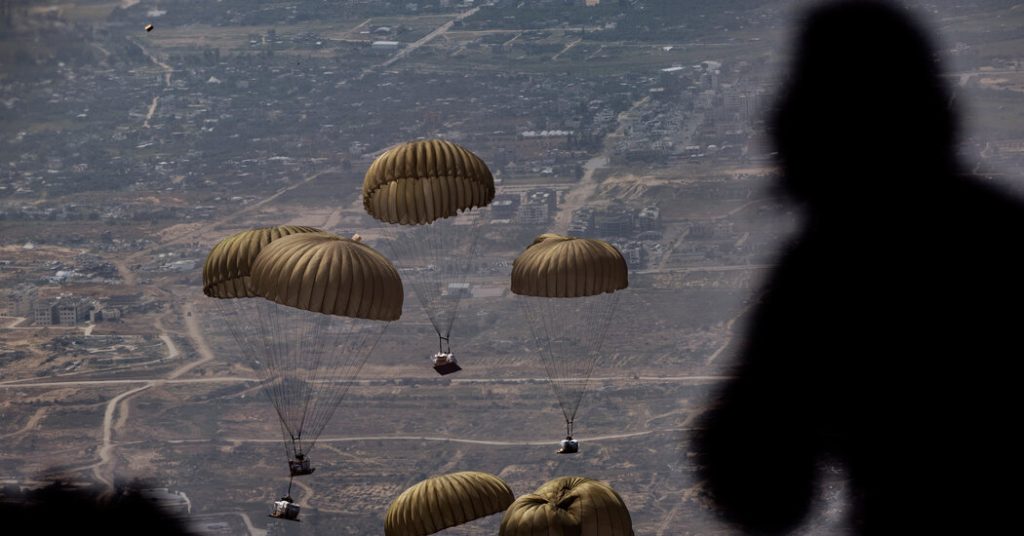A Jordanian air force cargo plane delivered aid to northern Gaza to help alleviate the dire humanitarian situation there, where a famine is looming and hunger is widespread. The aid, packed into bundles marked with the Jordanian flag, was airdropped across the territory, with the photos being allowed to document the mission. The drops are necessary due to a steep decline in aid entering Gaza by truck since Hamas’ attack on Israel in October, causing Israel to heavily restrict deliveries through border crossings. Israel has raised concerns about aid being diverted to Hamas or the black market, leading to slow deliveries and prompting aid drops as an alternative.
Countries like Jordan, the United States, Britain, and France have been conducting airdrops to provide food, water, and supplies to the population in Gaza as deliveries by truck are restricted. The drops are a quick and efficient way to get aid to those in need but involve extensive preparation and bureaucracy on the ground. Despite their effectiveness, airdrops are considered to be inefficient and expensive, with even a large military cargo plane delivering less aid than a single convoy of trucks could. Moreover, airdrops come with their own risks as seen this week when authorities reported that 12 people drowned while trying to retrieve supplies that had fallen into the ocean during a drop.
The airdrops are seen as a crucial lifeline for the people of Gaza as they struggle to access supplies due to restrictions on deliveries and concerns about aid being diverted. Humanitarian officials acknowledge that airdrops are helping to provide essential aid to the population, but they also highlight the challenges and limitations of this delivery method. While trucks remain the most efficient way to transport aid, airdrops are increasingly being used to reach areas where access is limited or restricted, highlighting the importance of finding innovative ways to deliver aid in crisis situations.
The situation in Gaza is dire, with fears of famine mounting and hunger widespread throughout the territory, making the need for aid drops even more urgent. The images of aid being parachuted down from planes are a stark reminder of the desperation facing the people of Gaza and the efforts being made to provide them with essential supplies. As humanitarian groups continue to sound the alarm over the humanitarian crisis in Gaza, airdrops are likely to remain a key part of the strategy to deliver aid to those in need, alongside other methods of delivery. Finding ways to streamline and improve the efficiency of airdrops will be crucial in ensuring that aid reaches those who need it most in a timely and effective manner.
The aid delivery mission by the Jordanian air force cargo plane provided a glimpse into the efforts being made to alleviate the suffering in Gaza and highlight the challenges faced by humanitarian organizations in delivering aid to conflict-affected areas. As the international community continues to respond to the crisis in Gaza, a multi-faceted approach that combines airdrops, truck deliveries, and other innovative methods will be necessary to address the pressing humanitarian needs of the population. The airdrops, while essential in providing aid to those in need, also underscore the complexities of delivering aid in conflict zones and the risks involved in providing assistance to vulnerable populations in such challenging environments. Ultimately, the mission of delivering aid to those in need in Gaza underscores the importance of international solidarity and cooperation in responding to humanitarian crises and addressing the needs of the most vulnerable populations in conflict-affected areas.


